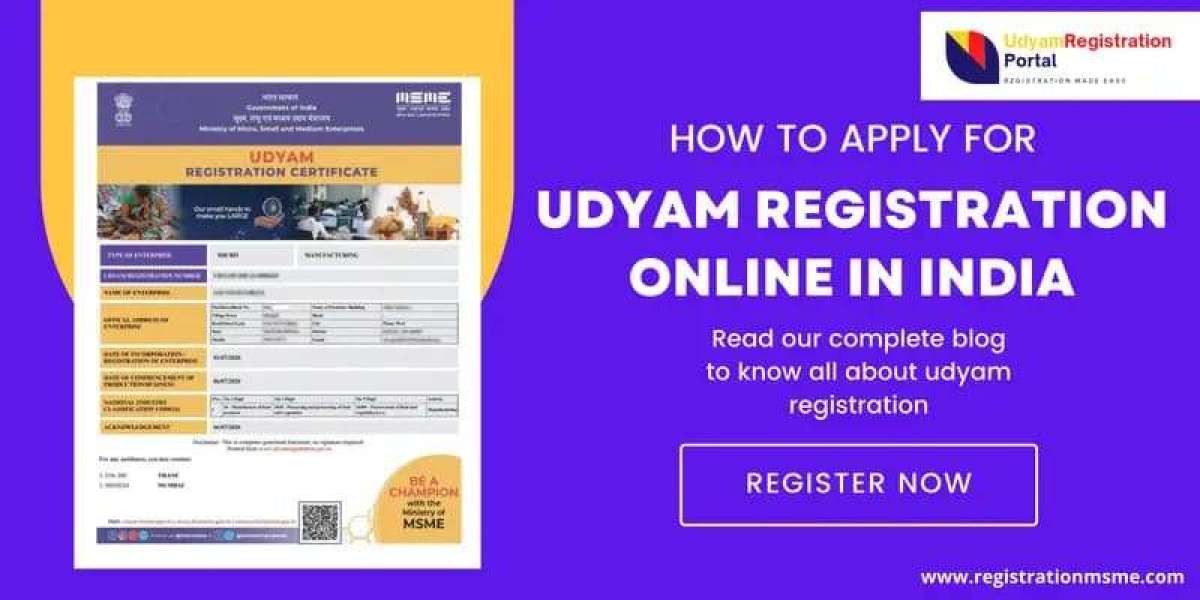Udyam Registration is a government initiative aimed at simplifying the process of registering Micro, Small, and Medium Enterprises (MSMEs) in India. Launched on July 1, 2020, this online registration system has replaced the earlier Udyog Aadhaar Memorandum (UAM) process. The goal of Udyam Registration is to make it easier for businesses to formalize, access benefits, and grow their operations.
If you are an entrepreneur looking to register your MSME under Udyam, this step-by-step guide will walk you through the online application process.
What Is Udyam Registration?
Udyam Registration is an online process for MSMEs to get officially recognized by the Government of India. The registration system is designed to be paperless and fully online, requiring no physical documentation or fees. By registering, businesses gain access to various government schemes, subsidies, and incentives, along with simplified processes for loans, taxation, and regulatory filings.
Eligibility for Udyam Registration
The eligibility for Udyam registration is based on the classification of businesses into Micro, Small, and Medium Enterprises, as defined by the Ministry of MSME:
- Micro Enterprises: Investment up to ₹1 crore and turnover up to ₹5 crore.
- Small Enterprises: Investment up to ₹10 crore and turnover up to ₹50 crore.
- Medium Enterprises: Investment up to ₹50 crore and turnover up to ₹250 crore.
Both new and existing businesses are eligible to apply for Udyam Registration. However, businesses already registered under Udyog Aadhaar must re-register under Udyam.
Documents Required for Udyam Registration
Udyam Registration is a paperless process, and the business owner does not need to upload any documents. However, the following information is required:
- Aadhaar Card: The Aadhaar number of the business owner or the authorized signatory is mandatory.
- PAN Card: A PAN (Permanent Account Number) card is required for all businesses.
- GSTIN (optional): Although having a GST number is not mandatory for micro-enterprises, it is recommended for those liable to pay GST.
- Business Details: Basic details of the enterprise such as the name, type of organization, and address.
It’s important to note that there are no registration fees for applying for Udyam.
Step-by-Step Guide to Apply for Udyam Registration Online
Here is a step-by-step process for applying for Udyam Registration through the official portal:
1. Visit the Udyam Registration Portal
- Go to the official Udyam Registration portal: https://registrationmsme.com/ .
- 2. Click on ‘For New Entrepreneurs’
- If you are a first-time applicant, click on the option for "For New Entrepreneurs who are not Registered yet as MSME or those with EM-II."
- If you are already registered under Udyog Aadhaar, there is a separate option for migrating to Udyam.
3. Enter Aadhaar Number
- Enter the Aadhaar number of the business owner (for proprietorships) or the authorized signatory (for partnership, company, or LLP).
- After entering the Aadhaar number, you will be asked to verify your identity through an OTP sent to your registered mobile number.
4. Fill in Business Information
- After Aadhaar verification, you will be prompted to enter essential business details, such as:
- The name of your business or organization.
- The type of enterprise (proprietorship, partnership, LLP, company, etc.).
- PAN and GSTIN (if applicable).
- The date of commencement of the business.
- The number of employees.
5. Enter Investment and Turnover Details
- Provide the investment amount made in plant and machinery or equipment.
- Mention the annual turnover of your business.
- The classification of your business as Micro, Small, or Medium will be automatically determined based on this data.
6. Self-Declaration
- Confirm the accuracy of the information provided through a self-declaration. The Udyam Registration process does not require uploading supporting documents, but the details must be accurate for future verification.
7. Submit the Application
- Once all the details are filled in, click on the "Submit" button. The system will generate an OTP, which will be sent to your registered mobile number or email for verification.
8. Receive Udyam Registration Certificate
- After successfully submitting the form, you will receive a unique Udyam Registration Number (URN).
- Your Udyam Registration Certificate will be issued online, and it can be downloaded directly from the portal. The certificate will contain a QR code that allows anyone to verify the authenticity of the registration.
Benefits of Udyam Registration
By completing the Udyam Registration process, businesses can unlock several benefits, including:
- Access to Government Schemes: MSMEs can apply for subsidies, credit-linked capital subsidies, and government procurement schemes.
- Ease of Obtaining Loans: Udyam-registered businesses can easily access collateral-free loans under the Credit Guarantee Fund Trust for Micro and Small Enterprises (CGTMSE).
- Priority in Government Tenders: Registered MSMEs receive preferences in government procurement and tenders.
- Protection Against Delayed Payments: MSMEs are legally protected under the MSMED Act for any delayed payments from buyers.
- Tax Benefits: MSMEs are eligible for various tax rebates and exemptions.
Conclusion
Udyam Registration is a simple, hassle-free, and paperless process that provides vital support to MSMEs in India. The process ensures formal recognition for businesses, enabling them to access a wide range of financial and operational benefits that can help them grow. With no fees involved and minimal documentation, applying for Udyam Registration online is an essential step for any MSME looking to thrive in India’s competitive marketplace.








